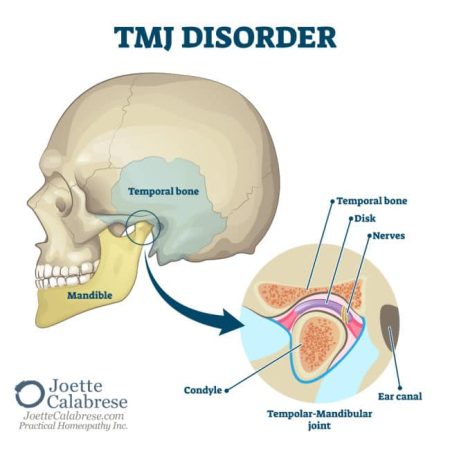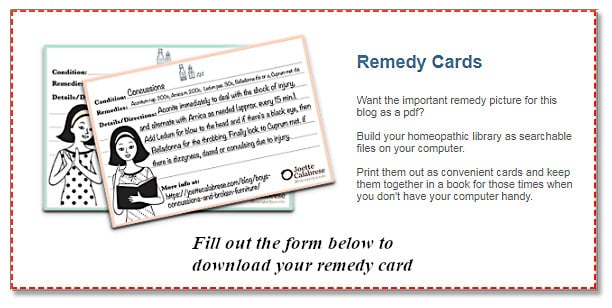
TMJ (Temporomandibular Joint) pain can range anywhere from annoying to excruciating. If you’ve never experienced it, count your blessings. Even so, hold onto this article. TMJ pain is so common that you likely know someone who could benefit from this information.
What Is TMJ?
This specialized joint is located in front of the ear, between the temporal bone in the skull and the mandible. It acts as a hinge, connecting the jawbone to the skull and allowing movement for chewing and talking. When it malfunctions, it can cause pain in the joint that radiates into the surrounding muscles.

What Causes TMJ Pain?
The etiology of TMJ disorder is often hard to pin down. The Mayo Clinic — a bastion of conventional medicine — even admits this issue:
“The exact cause of TMJ disorder is often hard to determine. The pain may be due to a mix of factors, including habits such as teeth clenching, gum chewing and nail biting; stress; and painful conditions that occur along with TMJ disorder such as fibromyalgia, osteoarthritis or jaw injury. The habit of teeth clenching or grinding also is known as bruxism.”1
You may recall that I wrote about bruxism in a previous blog post. Should bruxism be identified as the cause of a sufferer’s TMJ pain, the post offers a unique perspective on teeth clenching and grinding, particularly in children.
However, as you have come to expect in homeopathy, we do not always require complete clarity on the cause of a condition. Instead, we use the symptoms — as our gifts — to determine the closest fitting homeopathic medicine to alleviate the symptoms while also uprooting the underlying condition.
Ask any over-the-counter pain reliever to do that. (Spoiler alert: It can’t.)
Here’s a quick test to determine if you may possibly have TMJ disorder. What’s your first thought when you look at this photo?

If your first thought is “Wow, that’s a lot of sugar and red dye,” you may be fine. However, if just thinking about the idea of biting into a candied apple makes your jaw hurt, then you might be experiencing TMJ pain.
Now, obviously, that example is more than a little tongue-in-cheek. However, it proves my point that we don’t necessarily need to know the cause. We simply need to know the symptom: jaw pain. If pain results when the jaw attempts to bite something large, chewy or sticky … read on.
Naturally, Practical Homeopathy® Offers Help
My friend, the name of the condition provides a big hint as to which homeopathic medicine we might first consider: temporomandibular joint pain. Take a moment to see if you spot the clue.
Yep … the operative word is “joint.”
Because the nature of this dysfunction and pain occurs in a joint, it may be considered arthritis.
“WHAT?” you may protest. “Joette, my 17-year-old’s jaw hurts every time he eats, but he can’t possibly have arthritis already!”
Stay calm, now. Keep in mind that the word “ ‘arthritis’ literally means joint inflammation.”2 That inflammation is often precisely what causes the pain. And what is our first consideration for arthritis (inflammation) in joints?
If you guessed Rhus tox, you’ve got it!
Rhus toxicondendron is often referred to as the “rusty gate remedy.” Its hallmark is that the pain is generally worse on first movement of the joint, but it becomes slightly better with continued movement. (Just like an old rusty gate.)
Indeed, Rhus tox 200C, twice daily, has been shown to be successful in addressing joint pain matching that description, almost across the board.
Generally, we would employ Rhus tox 200C, twice daily, for about a week. Then reassess the TMJ pain. If the bouts of pain are fewer and farther between, it might be time to halt. (Should the symptoms reappear later, the medicine may be recommenced until very much better once again.)
I’m not saying you’ll run off to the county fair with a candied apple in mind — at least, I hope you won’t. But in my clinical experience, Rhus tox can encourage the pain to subside and stimulate the body to effect healing change.
Pass on the good news of Practical Homeopathy®!
Warmly,

1https://www.mayoclinic.org/diseases-conditions/tmj/symptoms-causes/syc-20350941
P.S. Having a materia medica can help you discern the differences between particular remedies. There are free materia medicas online. But I wrote my own, A Materia Medica: Practical Homeopathy® for Busy Families, to instruct you in everyday, easy-to-understand language instead of the complexities found in a professional materia medica.
Mothers and others find this materia medica invaluable when there are several appropriate medicines for a given condition. As you’ve heard me say before, in the absence of a specific protocol, we strive to choose the tightest-fitting homeopathic medicine in each situation by examining all the keynotes of the potential remedies. That’s nigh on impossible to do without a materia medica.




THANK YOU Joette for your fantastic, filanthropic and permanent efforts to inform, educate and helping others to help themselves!!! All over the world!
You´re such a blessing! And so is your work, spreading the wisdom and the knowledge of the Banerjees and practical Homeopathy! Namaste and Om Shanti!
Thank you for your kind words, Charlotte.
I’m happy this helps you and yours.